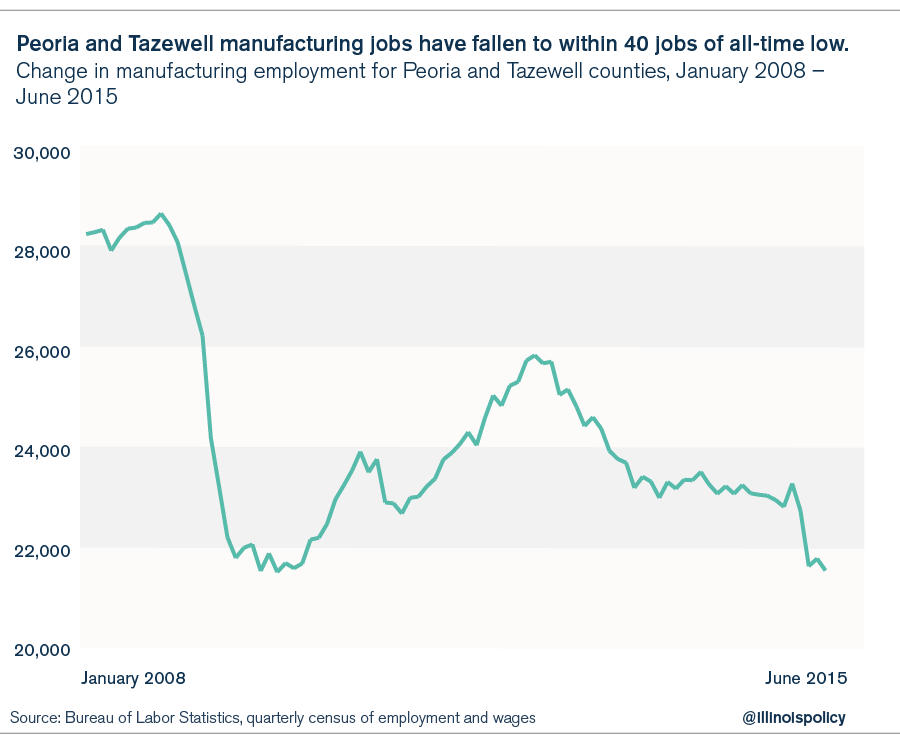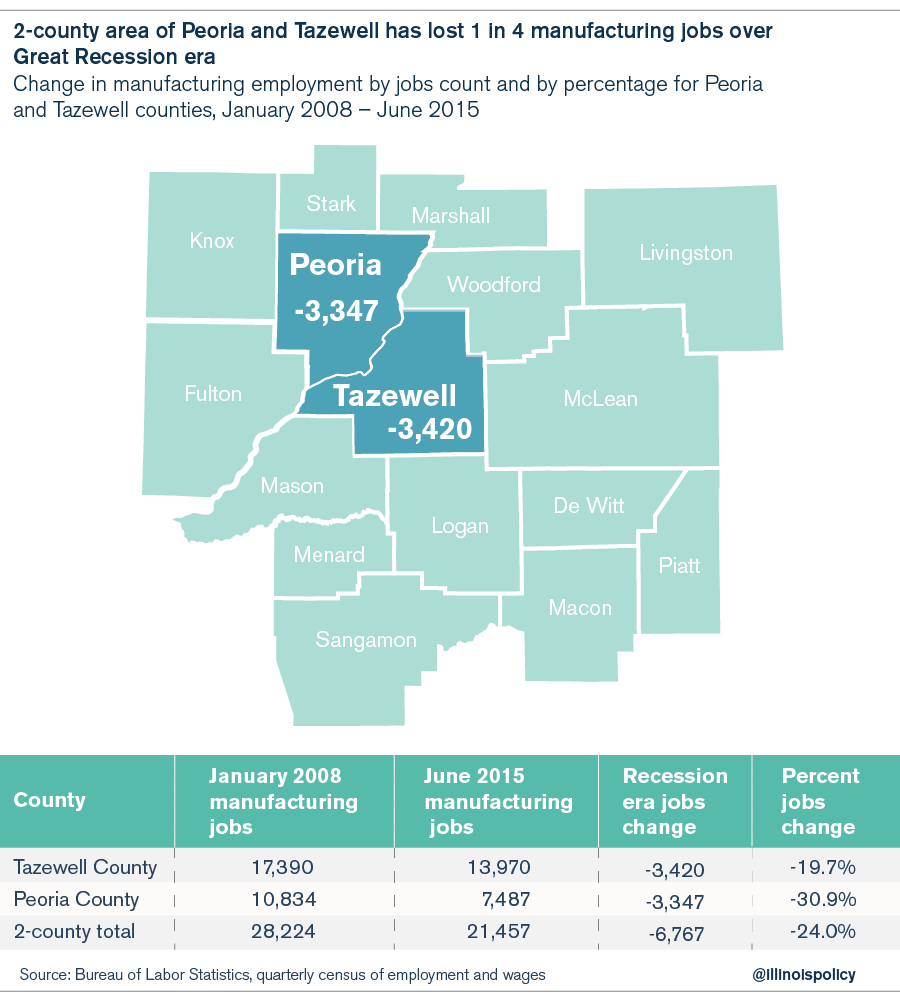CAT layoffs continue as manufacturing work in Peoria area closes in on all-time low
Caterpillar Inc.’s announcement of 670 layoffs comes amid the loss of a quarter of the manufacturing jobs in Peoria and Tazewell counties since 2008.
Peoria-based Caterpillar Inc. announced another series of painful job cuts on Jan. 29, trimming five facilities and 670 jobs in Illinois and several other states. The company will cut 230 jobs from office and production workers in its East Peoria, Ill., facility, and place another 120 employees from the same campus on indefinite layoff.
The cuts come as part of Caterpillar’s plan, announced in September 2015, to reduce its global workforce by 10,000. About half of those planned cuts were for management and salaried employees, and the other half will come from the consolidation of 20 of Caterpillar’s 103 manufacturing facilities worldwide.
Over the Great Recession era, manufacturing work opportunities have shrunk dramatically around Caterpillar’s Peoria headquarters. According to county-level data from the Bureau of Labor Statistics, Peoria and Tazewell counties saw a combined net reduction of nearly 6,800 manufacturing jobs between January 2008 and June 2015, with the total jobs count dropping to 21,457 from 28,224. That amounts to the elimination of one quarter of all manufacturing jobs in the two-county area.
After a big loss at the outset of the recession, the two-county area regained manufacturing jobs until the middle of 2012. Since then, manufacturing losses have resumed, and, as of June 2015, the most recent month of data, manufacturing jobs in Peoria and Tazewell counties had dropped to within 40 jobs of the counties’ combined all-time low.
 Prior to Caterpillar’s September 2015 layoff announcement, the company had already reduced its global workforce by 31,000 since 2012.
Prior to Caterpillar’s September 2015 layoff announcement, the company had already reduced its global workforce by 31,000 since 2012.
Included in those earlier cuts was a June 2014 announcement of the closing of three plants in Sterling and Dixon, Ill., which were to be consolidated and moved to similar production facilities in Menominee, Mich. At the time, Caterpillar spokeswoman Rachel Potts said, “[T]he location in Menominee is a better location for efficiency reasons.”
Other Illinois layoffs will result from Caterpillar’s plans, announced in March 2015, to relocate 230 jobs from Joliet to Mexico to “remain cost competitive.”
Caterpillar is facing tremendous global headwinds, as weak growth abroad and plummeting commodities prices have sunk demand for its products in the mining and energy production industries. Moving forward, CEO Doug Oberhelman said, “I’m confident these additional steps will better position Caterpillar to deliver solid results when demand improves.”
Illinois can prepare for renewed global demand by getting its house in order, so that when Caterpillar and companies like it begin hiring again, Illinoisans will get the jobs, rather than workers in other states or countries. Oberhelman addressed this topic in a February 2012 op-ed in the Springfield State Journal-Register in which he wrote:
“In short, when Caterpillar and most other companies look to locate a new factory in the United States, Illinois is not in the running for such projects.”
For Illinois to be in the running for factory development and expansions, Oberhelman said Illinois needs at least two things:
- A long-term, sustainable budget that relieves pressures on taxpayers, with the 2011 tax hike to sunset as planned
- Dramatically lower workers’ compensation costs
In closing his 2012 article, Oberhelman called for action, saying:
“Business leaders are making decisions today on where to invest in the future. Illinois must act now, with a bipartisan sense of urgency, to position itself for future job creation that is being discussed in boardrooms all across the country.”
State government failed to enact these needed reforms four years ago, and jobless Illinoisans are suffering for it today. During the last four years, Illinois is the only state in the entire Midwest to lose manufacturing jobs. Enough is enough. It’s time for tax and regulatory reform so that Illinois workers can compete for jobs again.

